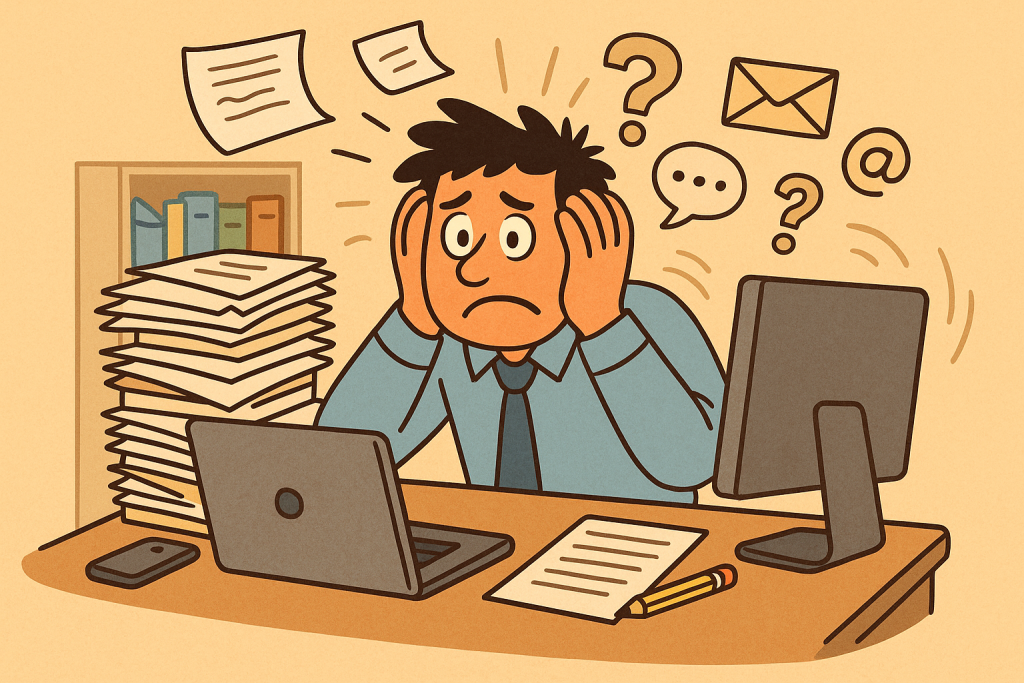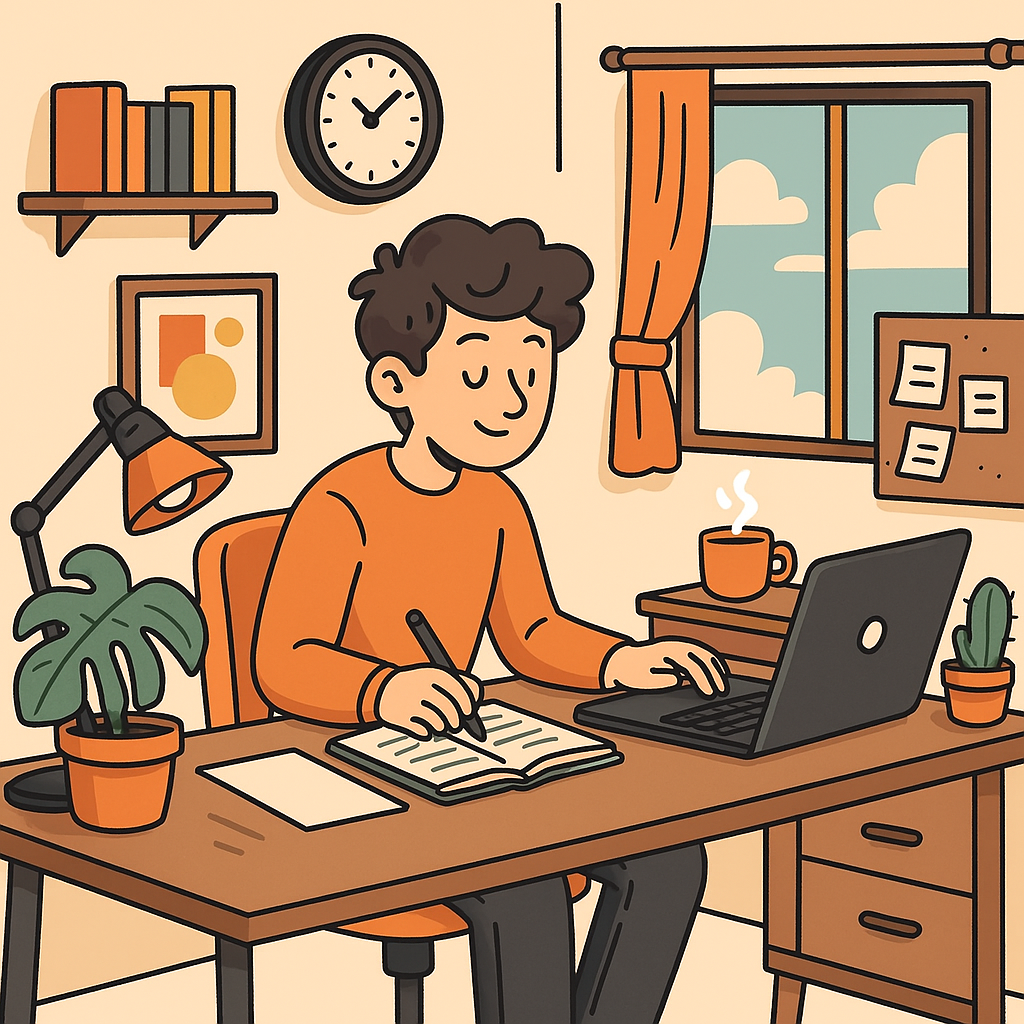Information overload is shaping up as 2025’s top digital-age challenge. With “infinite workdays,” constant pings, AI-generated noise, and Zoom fatigue on the rise, our brains are overloaded like never before. This guide helps you reclaim control, focus, and balance—making the key phrase avoid the pitfalls of information overload a habit, not a struggle.

What’s fueling today’s data deluge?
- “Infinite workday” burns us out
Microsoft data shows knowledge workers hit with digital alerts every 1.75 minutes—about 275 interruptions in an 8‑hour day Meetings often happen spur-of-the-moment, and evening meeting spikes are 16% higher than last year. - Digital anxiety and FOMO stress
One study of remote workers tied relentless messaging and app-switching to increased stress, anxiety, and burnout. It’s a phenomenon linked to “technostress”—the emotional drain triggered by nonstop technological demands. - Zoom fatigue and cognitive strain
Video calls amplify nonverbal overload—increasing pressure to “perform.” This surgical focus on self-presentation triggers mental exhaustion.
Recognize it: 5 early-warning signs
- Short attention spans leading to scattered work
- Chronic multitasking—constantly checking emails, chat, and notifications
- Decision paralysis from endless options
- Difficulty disconnecting after work hours
- Mental burnout and physical fatigue
Smart strategies to avoid the pitfalls of information overload
1. Master your channels
- Audit your apps—keep only truly essential tools; aim for 1–2 email/chat platforms. Gartner recommends communication streamlining to reduce noise.
- Batch communication: consolidate updates into scheduled time slots to reduce interruptions by up to 40%.
- Use “Do Not Disturb” modes aggressively.
2. Time-block and focus periods
- Use calendar blocks for deep work—reserve 90 minutes minimum for high-focus tasks.
- Set buffer zones between meetings to reset and prevent continuous partial attention syndrome.
- Build a short pre-meeting ritual to prepare your mind—and a post-meeting wind-down to clear any lingering stress.
3. Reclaim the right to disconnect
- Time off tech: Silence notifications after hours and declare a tech-free evening.
- Leverage global trends—Slovenia and Canada have laws protecting digital disconnect; this approach is catching on everywhere.
- Model this behavior for your peers—set a “last email” cutoff and respect each other’s offline time.
4. Leverage Calm Technology
- Calm Technology design—where tech fades into the background unless needed—helps ease cognitive overload.
- Set non-intrusive notifications or use ambient cues (like gentle color changes) rather than full-screen alerts.
5. Optimize Zoom & video meetings
- Use speaker-only view, static backgrounds, and shorter call durations to reduce fatigue.
- Switch off self-view to escape constant self-monitoring.
- For status updates, use concise emails or voice notes instead of video calls.
6. Strategic AI and automation
- Let AI summarize meeting notes or draft emails—but don’t let it replace human judgment.
- Avoid over-reliance: too much AI use can erode connection and amplify overload.
- Use AI off-hours to automate tasks, not intrude into personal time.
7. Build mental “room”
- Practice mindfulness (breathing, short walks, micro-meditation).
- Give your brain uninterrupted “off-time” to prevent burnout: get enough sleep, weekends unplugged, nature breaks.
- Employers: encourage regular breaks, mental health check-ins, and de-cluttered workflows.
2025 trend spotlight: Mixed-reality meeting design
A new frontier—mixed-reality (MR) connects virtual visuals with real-world focus. Researchers in 2025 are prototyping MR setups where attendees dynamically filter sensory channels to reduce overload during large meetings . Imagine attending a hybrid brainstorm but dimming side-chatter visuals so only essential info remains—effectively avoiding the pitfalls of information overload!
Daily routine to avoid the pitfalls of information overload
| Time | Action |
|---|---|
| Morning | Turn on notifications for 30 min; batch-process emails and chats |
| Midday focus | Deep work block with notifications muted |
| Afternoon | One 5‑minute mini-break (stretch, meditate) after every 90 min block |
| Pre-evening | One final sync meeting or email batch |
| Evening | Activate DND mode; no notifications post 7 pm |
| Night | 10-minute tech-free wind-down (read, journal, relax) |
Why this works—backed by research
- Reduced app noise equals less switching cost, boosting productivity according to Gartner insights .
- Structured time helps prevent exhaustion and impulsive multitasking .
- Boundaries, both hard and soft, combat digital presenteeism—the expectation of being always-on.
In closing
The stakes are real. Constant pings, endless emails, Zoom fatigue—and even AI-generated distractions—threaten our focus, mental health, and creativity. But overlaying structure, boundaries, and mindful tools can help you avoid the pitfalls of information overload and reclaim a more intentional, balanced work—and life—rhythm.
References
- Arnold, M., Goldschmitt, M., & Rigotti, T. (2023). Dealing with information overload: a comprehensive review. Frontiers in Psychology. pmc.ncbi.nlm.nih.gov+1researchgate.net+1.
- Anderson, S. W. (2015). Content Curation: How to Avoid Information Overload. Corwin. sk.sagepub.com.
- The Decision Lab. (2024). Information Overload: Reference Guide. oxfordre.com+3thedecisionlab.com+3prenax.com+3.






